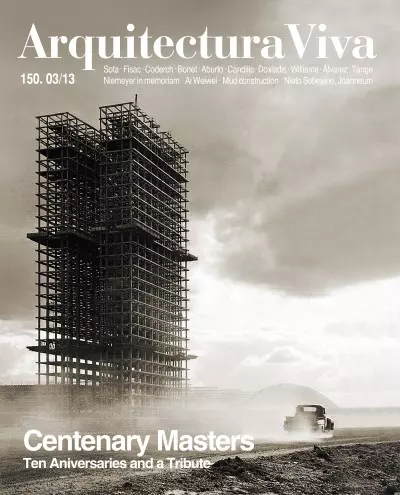

(Buenos Aires, 1913 - Buenos Aires, 2011)
Trained in early rationalism, Álvarez was one of those responsible for introducing into Argentina the language of modernity, to which he remained faithful through seven decades.
We begin to celebrate the centenaries of those who were our masters, and the many anniversaries in 2013 prompts a pixelated portrait of architecture after the First World War with ten biographies of figures born on the eve of the Second. In my case,
2013 is a year of centenaries. We commemorate the birth of ten masters: five Spaniards, one Japanese, one Greek, one Azerbaijan-French and two Argentinians. The Spaniards (José Antonio Coderch, Alejandro de la Sota, Miguel Fisac, Antoni Bonet i Caste
1913-2011 Faithful representative of the principles of the Modern Movement and admirer of Mies van der Rohe, the Argentinian Mario Roberto Álvarez became acquainted with the architecture of the avant-gardes in 1938 when, after graduating with Gold Me
Formado en la época heroica del Movimiento Moderno, el recientemente fallecido Mario Roberto Álvarez introdujo en Argentina los principios del racionalismo, a los que permaneció fiel en su larga carrera.
En agosto de 1998, cuando se encontraba en Buenos Aires impartiendo un curso, el arquitecto y catedrático de la Escuela de Barcelona Helio Piñón descubrió la obra de un veterano colega argentino, Mario Roberto Álvarez. Fue una especie de flechazo, y

